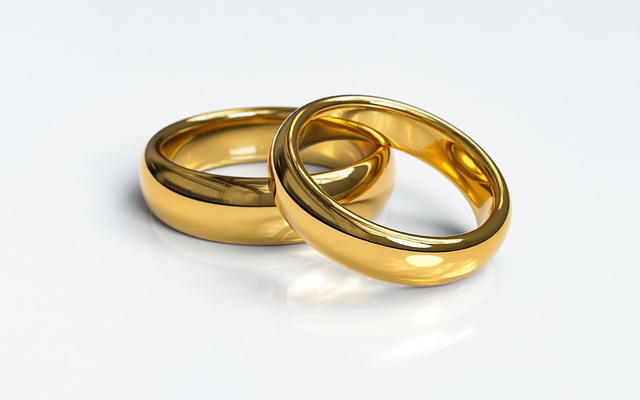Types Of Wedding Rings Explained
Wedding rings come in many forms, from plain bands to detailed designs with stones or patterns. Each type has its own look and meaning, giving couples choices that fit their style and traditions. In this article, you will learn about the main types of wedding rings, including classic gold, modern platinum, and rings with diamonds or other details. The guide also explains how these rings are used in different settings and why they are an important part of marriage traditions across the world.

Understanding Wedding Ring Materials
Wedding rings come in a variety of materials, each offering distinct advantages in terms of durability, appearance, and price point. The most popular choices include precious metals like gold, platinum, and increasingly, alternative metals such as titanium and tungsten. Gold remains a traditional favorite, available in yellow, white, and rose variations, each created by mixing pure gold with different alloy metals. Platinum stands out for its natural white luster and exceptional durability, making it a premium choice for those seeking longevity. White gold provides a similar aesthetic to platinum at a more accessible price, though it requires periodic re-plating to maintain its bright finish. Understanding these fundamental material differences helps narrow down options based on lifestyle, budget, and aesthetic preferences.
Gold Wedding Rings and Their Variations
Gold wedding rings have adorned fingers for centuries, symbolizing wealth, commitment, and enduring love. Available in different karats, gold rings typically range from 9K to 18K, with higher karat numbers indicating greater gold purity. Yellow gold maintains its classic appeal with a warm, traditional appearance that requires minimal maintenance and suits most skin tones. White gold offers a contemporary alternative, created by alloying yellow gold with metals like palladium or nickel, then plating with rhodium for a brilliant white finish. Rose gold has surged in popularity recently, achieving its distinctive pinkish hue through copper alloys, creating a romantic and vintage-inspired aesthetic. Each gold variation offers different levels of durability, with lower karat gold being harder and more scratch-resistant due to higher alloy content, while higher karat gold provides richer color and hypoallergenic properties.
Platinum Wedding Rings and Their Benefits
Platinum wedding rings represent the pinnacle of precious metal jewelry, prized for their rarity, purity, and exceptional durability. Unlike gold, platinum used in jewelry typically contains 95% pure platinum, making it naturally hypoallergenic and ideal for sensitive skin. Its dense composition means platinum rings develop a patina over time rather than wearing away, with metal simply moving around the surface rather than being lost. This characteristic ensures platinum rings maintain their weight and can be polished back to their original luster throughout a lifetime. The metal’s natural white color never fades or requires re-plating, offering long-term value despite higher initial costs. Platinum’s strength also provides superior security for gemstone settings, making it an excellent choice for rings featuring diamonds or other precious stones.
Diamond Wedding Rings and Setting Styles
Diamond wedding rings elevate traditional bands with sparkling gemstones arranged in various setting styles. Eternity bands feature diamonds encircling the entire ring, symbolizing never-ending love, while half-eternity designs place stones across the top portion for comfort and practicality. Channel settings secure diamonds between two metal walls, creating a smooth, contemporary appearance that protects stones from snagging. Pavé settings use tiny beads of metal to hold small diamonds closely together, creating a glittering surface that maximizes sparkle. Bezel settings encircle each diamond with metal, offering excellent protection for active lifestyles while maintaining a sleek, modern aesthetic. The choice of setting affects both the ring’s appearance and durability, with some styles better suited to daily wear than others. Diamond quality, measured by the four Cs (cut, clarity, color, and carat), significantly impacts both appearance and price.
Alternative Metal Wedding Rings
Beyond traditional precious metals, alternative materials have gained considerable traction among couples seeking unique, durable, and budget-friendly options. Titanium rings offer exceptional strength-to-weight ratio, creating comfortable, scratch-resistant bands that suit active lifestyles. Tungsten carbide provides even greater hardness, making it virtually scratch-proof, though its brittleness means it can shatter under extreme impact. Stainless steel delivers affordability and durability with a modern appearance, while cobalt chrome offers a white metal alternative that resists tarnishing. These alternative metals typically cost significantly less than precious metals while offering practical benefits for those working with their hands or engaging in physical activities. However, they cannot be resized like traditional metals, requiring careful sizing at purchase.
Traditional Band Styles and Modern Designs
Wedding ring styles range from simple, timeless bands to elaborate contemporary designs that reflect personal taste and creativity. Classic court rings feature a rounded exterior and interior for comfortable all-day wear, while flat court designs combine a flat exterior with a rounded interior. D-shaped bands offer a flat interior with a rounded top, creating a substantial feel on the finger. Width variations dramatically change a ring’s appearance, with narrow bands (2-4mm) offering delicate elegance and wider bands (6-8mm) making bold statements. Textured finishes including hammered, brushed, and matte surfaces provide alternatives to traditional polished looks. Modern couples increasingly choose mixed metals, asymmetrical designs, or personalized engravings to create truly unique symbols of their union.
Selecting the Right Wedding Ring
Choosing the perfect wedding ring involves balancing aesthetic preferences, practical considerations, and budget constraints. Consider your lifestyle when selecting materials—active individuals may prefer durable metals like platinum or titanium, while those seeking traditional elegance might favor gold. Think about how the wedding ring will pair with an engagement ring if applicable, ensuring metals and styles complement each other. Comfort matters significantly for jewelry worn daily, so trying on different widths and profiles helps identify what feels natural. Budget considerations vary widely, with simple gold bands starting around several hundred dollars while platinum diamond eternity rings can reach several thousand. Taking time to research options, try on different styles, and understand the characteristics of various materials ensures your wedding ring will be cherished for a lifetime.




